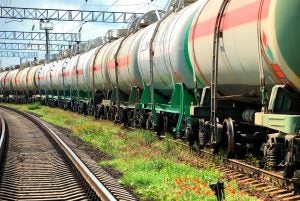By Michelle Allen, Manager, Community Engagement
Recent high-profile chemical disasters in East Palestine, Ohio, and Deer Park, Texas, have highlighted the risks facing communities where the petrochemical industry operates, but not every spill or toxic pollution release makes headlines. By some counts, there is a chemical fire, explosion or release every other day in this country.
As countries around the world invest in strategies to reduce carbon pollution and rely less on fossil fuels, the oil and gas industry has turned to petrochemicals as an opportunity for growth. Petrochemicals are chemical derivatives refined from petroleum, and they’re found in products we use every day: from water bottles and plastic cases on our phones to paints, fertilizers and carpets.
But images of billowing black clouds of smoke hanging over homes, schools and parks in communities from Appalachia to the Gulf Coast are a reminder that our everyday products—many of which are for the sole purpose of convenience—are not without cost. And too often, these costs are borne by someone else.

Communities are exposed to health risks from petrochemical pollution
Exposure to petrochemical pollution—from acute events like these environmental disasters, but also from prolonged exposure to these air toxics, day in and day out—puts communities at risk. But communities don’t experience these risks equally. Black and brown communities and low-income areas bear the brunt of this unequal and unjust pollution. Children, pregnant people, seniors and people with existing medical conditions are especially at risk of developing a host of health issues from exposure to this toxic pollution, including cancer, respiratory illness, asthma and more.
Communities on the frontlines of petrochemical pollution have long expressed that they have the right to know what’s in the air they’re breathing so they can take action to protect themselves and demand accountability from decisionmakers and industry. A newly proposed update to regulations in the Clean Air Act is a significant step in the right direction.
New EPA proposal would help hold polluters accountable
The Environmental Protection Agency has proposed stronger regulations for some 200 petrochemical facilities throughout the country, more than half of which are concentrated in Texas and Louisiana. These proposed rules include safeguards against petrochemical pollution that advocates have long called for: more air-quality monitoring at the fence line of facilities, stronger protections against flaring, and actions to close loopholes that allow facilities to violate regulations during periods of startup, shutdown and malfunction.
Dedicated community leaders have been leading the fight against this pollution for decades, and it’s great to see the Administration meet these efforts with long overdue protections. We need stronger regulations at the local, state and federal levels to protect the health of residents and require regulators to hold polluters accountable to the communities where they’re operating.
The additional transparency and accountability that will come from these protections are especially critical because many of these facilities have a documented history of breaking the law: our analysis shows that more than half of the facilities expected to be impacted by this proposal are currently violating at least one environmental law, and more than 80 percent have been out of compliance in the last three years.
Strong federal protections are needed to safeguard community health
We urge EPA to adopt a strong final version of this rule that is truly protective of public health. Requiring fence line monitoring to cover a greater number of chemicals and facilities, for example, would help hold polluters accountable and prevent further harm to communities.
EPA’s proposal is a critical step in the right direction—a foundational safeguard that can ground additional layers of protection for communities impacted by petrochemical pollution. Strong federal protections should be part of a comprehensive strategy to help communities achieve a healthy, thriving future for generations to come.










